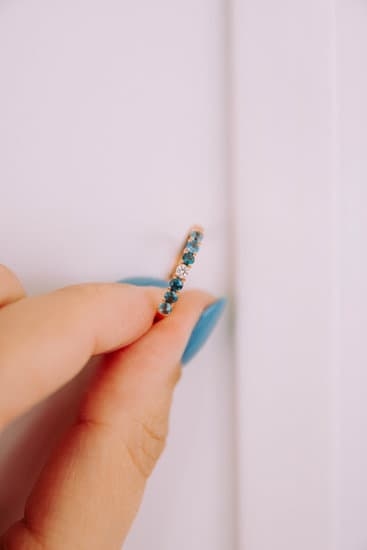Are you looking to learn how to sell handmade jewelry at craft fairs? Craft fairs are a great opportunity for artisans and makers to showcase their unique products and connect with customers in person. In this article, we will provide you with valuable insights and tips on how to make the most of your craft fair experience and successfully sell your handmade jewelry.
Craft fairs are a vibrant marketplace where creativity meets commerce, making them an ideal venue for selling handmade jewelry. Understanding the dynamics of the craft fair market is essential for success, from identifying your target audience to learning about the competition and trends in jewelry making. As a jewelry maker, it’s important to have a solid understanding of what sets your creations apart and appeals to potential customers.
In this section, we will delve into the nuances of the craft fair market, helping you gain valuable insights that will inform your decision-making process as you prepare for upcoming events. From understanding the demographics of attendees to recognizing popular styles and price points, we’ll help you navigate the unique landscape of craft fairs and set the stage for a successful selling experience.
Setting Up Your Booth
When it comes to selling handmade jewelry at craft fairs, creating a striking visual impact with your booth can make all the difference in attracting potential customers. Your booth should be eye-catching and inviting, drawing people in from the crowds of other vendors. Here are some key tips on how to set up your booth for maximum visual impact.
Booth Layout and Design
Consider the layout and design of your booth to create an inviting and visually appealing space. Utilize vertical displays to maximize space and showcase a variety of jewelry pieces. Use decorative elements such as tablecloths, signage, and lighting to enhance the overall aesthetic of your booth.
Branding and Cohesiveness
Ensure that your booth is cohesive with your brand’s aesthetic and style. Consistent branding creates a professional image and helps customers remember your products. Use signage, business cards, and branded packaging to reinforce your brand identity.
Interactive Elements
Incorporate interactive elements into your booth to engage with customers and encourage them to spend time exploring your jewelry. Offer demonstrations of how you create your jewelry or provide opportunities for customers to try on pieces. These interactions can help build connections with potential buyers.
By setting up your booth with a strong visual impact, you can capture the attention of craft fair attendees and increase the likelihood of making sales. Remember that the look and feel of your booth should align with the quality of your handmade jewelry, leaving a lasting impression on customers long after they’ve left the fair.
Pricing Your Handmade Jewelry
When it comes to selling handmade jewelry at craft fairs, pricing is a crucial factor that can make or break your success. Finding the sweet spot in pricing your products can be challenging, but with some strategic thinking and research, you can set prices that attract customers and generate profit.
Understanding Your Costs
Before you can determine the right price for your handmade jewelry, it’s essential to understand all the costs involved in creating and selling your products. This includes the cost of materials, labor, booth rental fees, and any other expenses associated with participating in the craft fair. By calculating these costs, you can establish a baseline for your pricing strategy.
Researching the Market
It’s important to research similar handmade jewelry products at other craft fairs to understand how they are priced. Take note of the pricing range of comparable items and consider what sets your products apart. Additionally, talk to other vendors at the craft fair and gather insights into how they price their handmade goods. This information will help you gauge where your pricing should fall within the market.
Finding a Balance
Once you have a clear understanding of your costs and have researched the market, it’s time to find a balance in setting your prices. Consider factors such as quality, uniqueness of design, and target customer demographics when determining your prices. You want to set prices that are competitive yet reflective of the value and craftsmanship of your handmade jewelry. Don’t forget to factor in potential discounts or promotions to incentivize sales at the craft fair.
By strategically assessing costs, researching the market, and finding a balance between competitiveness and value, you can find the sweet spot in pricing your handmade jewelry at craft fairs. This will not only attract customers but also ensure that you are able to generate a profit from your sales.
Marketing and Promotion
When it comes to selling handmade jewelry at craft fairs, marketing and promotion are essential for attracting customers to your booth. Here are some effective strategies for getting the word out about your products and drawing in potential buyers:
- Utilize social media: Take advantage of platforms like Instagram, Facebook, and Pinterest to showcase your handmade jewelry before the event. Create posts that highlight your unique pieces, the process behind making them, and any special promotions you may be running during the fair.
- Offer a sneak peek: Tease your followers with a preview of the items you’ll be selling at the craft fair. This can create excitement and anticipation among potential customers, making them more likely to seek out your booth once they arrive.
- Collaborate with other vendors: Building partnerships with other artisans or vendors at the craft fair can help expand your reach. Consider cross-promoting each other’s products on social media or offering joint promotions to attract a larger audience.
In addition to these strategies, it’s important to consider traditional marketing tactics as well. Utilize printed materials such as flyers or business cards to distribute before and during the event. You could also consider reaching out to local media outlets, such as newspapers or radio stations, to see if they would be interested in featuring your handmade jewelry and promoting the upcoming craft fair.
Ultimately, effective marketing and promotion can make all the difference in driving traffic to your booth and increasing sales of your handmade jewelry at craft fairs. By using a combination of online and offline strategies, you can reach a wider audience and ensure that potential customers know where to find you when they attend the event.
Merchandising Your Products
When it comes to selling handmade jewelry at craft fairs, one of the most important aspects is how you display your products. The way you present your items can make a significant impact on whether or not potential customers will be drawn to your booth.
First and foremost, it’s essential to make sure that your jewelry is the focal point of your display. Using simple, neutral-colored backdrops and minimal props can help to ensure that your handmade pieces stand out.
Another key aspect of effectively merchandising your handmade jewelry is to group similar items together. This could mean organizing by color, style, material, or theme. Additionally, be sure to use varied heights and levels in your display to add visual interest and draw the eye to different parts of your booth.
Furthermore, consider incorporating signage into your display. This can provide essential information about your products as well as pricing details. Clear and easy-to-read signs that reflect the style of your handmade jewelry can help attract potential customers while also making the shopping experience more convenient for them.
Finally, don’t forget about lighting. Good lighting can make all the difference in how your handmade jewelry is perceived by customers. It’s worth investing in portable lights or clip-on fixtures that can help illuminate and highlight certain pieces in order to catch the eye of potential buyers.
| Aspect | Tips |
|---|---|
| Display | Make sure jewelry is focal point |
| Organization | Group similar items together |
| Signage | Create clear and easy-to-read signs |
| Lighting | Invest in portable lights or clip-on fixtures |
Engaging With Customers
Craft fairs are not just about selling your handmade jewelry; they are also an opportunity to connect with potential customers and build lasting relationships. One of the most effective ways to engage with customers is by telling the story behind your jewelry. Whether it’s the inspiration behind a particular piece or the materials you use, sharing these details can create a personal connection with the customer and make them more likely to make a purchase.
Another way to engage with customers is by offering them a hands-on experience. Consider setting up a work station at your booth where customers can watch you create jewelry or even try their hand at making something themselves. This interactive approach can be a great way to draw people in and keep them engaged while showcasing your skills as a maker.
When it comes to closing sales, it’s important to be attentive but not pushy. Answer any questions potential customers may have, offer suggestions, and provide information about custom orders if applicable. If someone seems interested but hesitant, consider offering a special discount or incentive to seal the deal.
| Engaging With Customers | Building Relationships and Closing Sales |
|---|---|
| Telling the story behind your jewelry | Creating a personal connection with customers |
| Offering an interactive experience at your booth | Drawing people in and keeping them engaged |
| Being attentive yet respectful in closing sales | Providing an enjoyable experience for potential customers |
Managing Inventory and Sales
As a seller of handmade jewelry at craft fairs, it’s important to effectively manage your inventory and sales to ensure a successful and profitable event. Keeping track of your products and sales will not only help you understand what is popular among customers, but also allow you to make informed decisions for future craft fairs. Here are some tips on how to manage inventory and sales effectively:
- Utilize Inventory Management Tools: Consider using inventory management software or apps to keep track of your handmade jewelry. These tools can help you monitor stock levels, track sales, and even generate reports to analyze your best-selling items.
- Implement a System for Organization: Develop a system for organizing your products at the craft fair to make it easier for you to track sales. This could include labeling each item with a unique code or using color-coded tags to indicate different categories of jewelry.
In addition, it’s essential to keep detailed records of your sales, including the quantity and type of jewelry sold, as well as the total revenue generated. By keeping thorough records, you can identify patterns in customer preferences and adjust your inventory accordingly for future events. Lastly, don’t forget to factor in any additional expenses such as booth fees, packaging materials, and marketing costs when analyzing your overall sales performance.
Post-Event Evaluation
After participating in a craft fair and showcasing your handmade jewelry, it’s important to take the time to evaluate your experience. This post-event evaluation will allow you to reflect on what went well, what could be improved, and how you can learn from the experience for future craft fairs.
Firstly, take a moment to review your sales performance. Look at which pieces were the top sellers and which ones didn’t perform as expected. Analyze the pricing strategy you used and determine if there are any adjustments that can be made for future events. Additionally, assess the feedback you received from customers. This can provide valuable insights into their preferences and considerations for your next collection.
Next, consider the layout and design of your booth. Reflect on how customers interacted with your display and if there were any challenges in navigating through your booth. Think about ways to improve the visual impact of your setup to attract more attention from potential buyers.
Lastly, evaluate your marketing and promotional efforts. Consider what methods were effective in driving traffic to your booth, such as social media promotion or special offers. Reflect on how effectively engaged with customers and built relationships during the event.
By reflecting on these aspects of your craft fair experience, you can gain valuable insights on how to sell handmade jewelry at craft fairs more successfully in the future. Use this evaluation process as an opportunity to learn and grow as a handmade jewelry vendor, implementing changes that will ultimately lead to greater success at future events.
Conclusion
In conclusion, selling handmade jewelry at craft fairs can be a rewarding and profitable venture with the right strategies in place. By understanding the craft fair market, creating a visually appealing booth, pricing your products effectively, and using marketing and promotion tactics to attract customers, you can set yourself up for success.
Additionally, merchandising your products thoughtfully, engaging with customers to build relationships and close sales, managing inventory and sales efficiently, and reflecting on your experience post-event are all crucial aspects of achieving success at future craft fairs.
One tip for success at future craft fairs is to continue refining your booth setup and product display. Consider seeking feedback from customers or fellow vendors to gain insight into what draws people to your booth and what could be improved. Additionally, take note of popular trends or styles in handmade jewelry and incorporate them into your designs to stay relevant in the market.
Another important factor in achieving success at future craft fairs is to prioritize customer engagement and relationship-building. Building loyal customers who love your handmade jewelry can lead to repeat business and positive word-of-mouth referrals. Consider offering a loyalty program or providing excellent customer service to keep customers coming back for more.
Lastly, don’t underestimate the power of post-event evaluation. Take the time to reflect on what worked well and what could be improved upon at each craft fair you participate in. This will help you make informed decisions for future events and continuously improve your sales strategies for selling handmade jewelry at craft fairs. By following these tips for success, you can maximize your potential as a successful vendor at craft fairs.
Frequently Asked Questions
How Do You Set Up a Jewelry Booth at a Craft Fair?
Setting up a jewelry booth at a craft fair requires careful planning and preparation. Firstly, create an eye-catching display that showcases your pieces effectively.
Make sure to have enough stock and consider offering different price points to cater to a wide range of customers. Engage with potential buyers, share information about your jewelry, and be prepared to process sales efficiently.
What DIY Jewelry Sells the Most?
DIY jewelry that tends to sell the most includes trendy and versatile pieces such as beaded bracelets, personalized necklaces, and simple earrings. These items are popular because they can easily complement different outfits and appeal to a wider audience. Additionally, customizable jewelry that allows for personalization or meaningful messages often attracts more buyers.
What Is the Best Place to Sell Handmade Jewelry?
When it comes to selling handmade jewelry, the best place largely depends on the target market and the type of jewelry being sold. Online platforms like Etsy, Instagram, and even personal websites can reach a global audience and allow for direct sales.
Local craft fairs, artisan markets, and pop-up events provide opportunities for in-person interactions with potential customers. Consider exploring a combination of both online and offline channels to maximize exposure and sales opportunities for handmade jewelry.

Welcome to my jewelry blog! My name is Sarah and I am the owner of this blog.
I love making jewelry and sharing my creations with others.
So whether you’re someone who loves wearing jewelry yourself or simply enjoys learning about it, be sure to check out my blog for insightful posts on everything related to this exciting topic!





